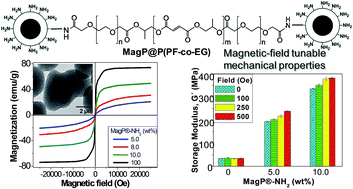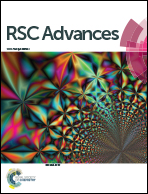Magnetic Fe3O4@poly(propylene fumarate-co-ethylene glycol) core–shell biomaterials
Abstract
Core–shell composites comprising a core of amino-functionalized magnetite microparticles (MagP®-NH2) covalently attached to a poly(propylene fumarate-co-ethylene glycol) P(PF-co-EG) network shell have been developed and characterized. The diameter of the core–shell structure was found to decrease while the grafting degree increased as the MagP®-NH2/(P(PF-co-EG)) ratio increased. The composites showed superparamagnetic behaviour, and those with thinner shells displayed higher magnetic susceptibility values. The microparticles significantly improved the chemical stability, biodegradability and antibacterial activity of the copolymer. Cell metabolic activity levels after exposure to the composites decreased with increasing microparticle content and incubation period. Very strong increments in stiffness and strength were attained, both under dry conditions and after soaking in a simulated body fluid. It has been found that the morphology, hence the final composite properties, can be finely tuned by varying the microparticle/copolymer weight ratio, the optimal being 10 : 90, given that it leads to the best combination of magnetic, mechanical, rheological and antibacterial properties. These novel biocomposites also showed magnetic-field tunable mechanical properties, hence could be further used for the design of magnetic responsive scaffolds for soft-tissue replacement whose properties can be triggered by external stimuli.



 Please wait while we load your content...
Please wait while we load your content...